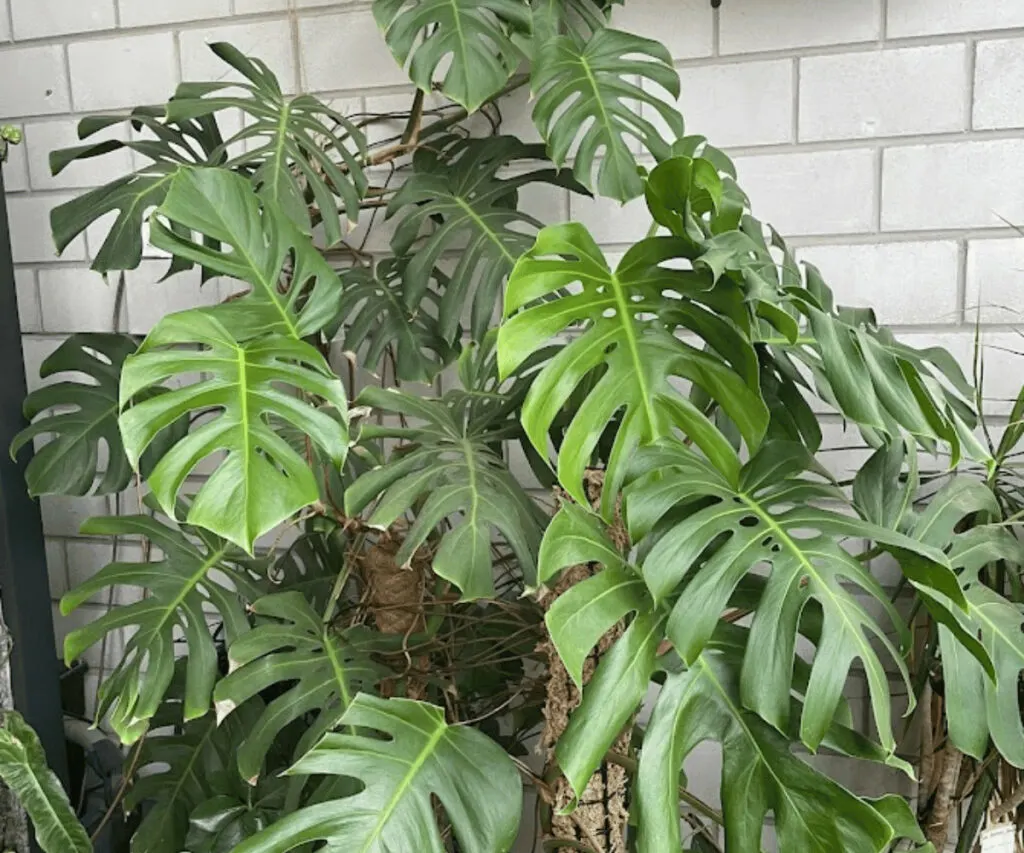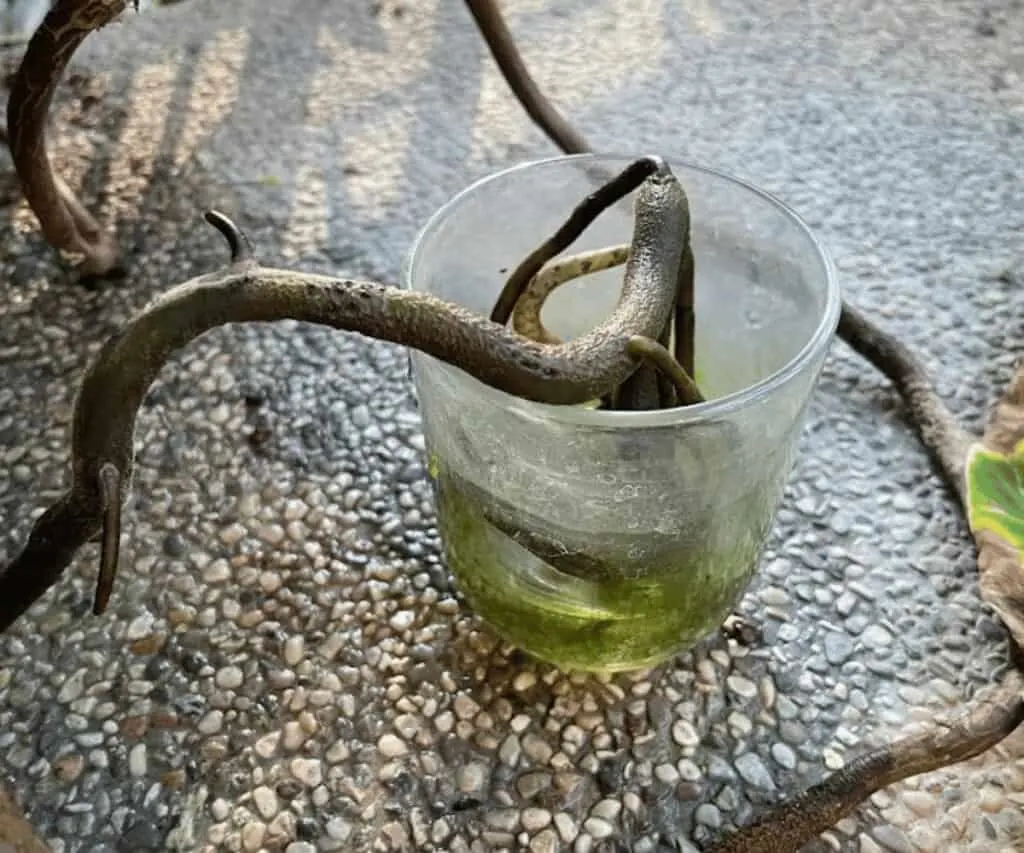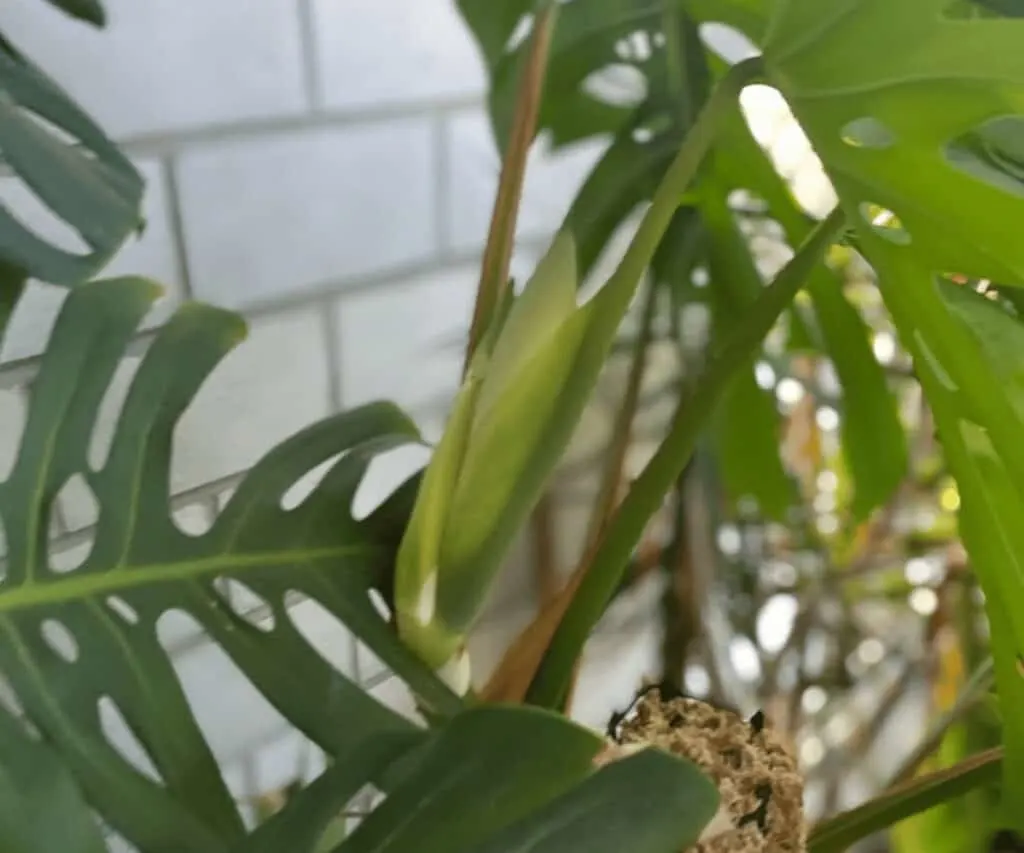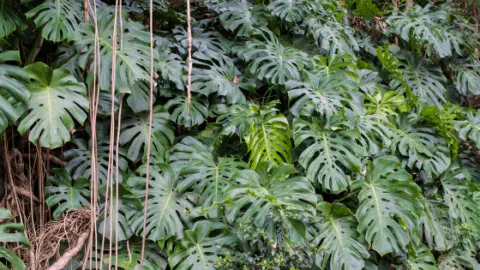How Fast Does Monstera Deliciosa Grow? Monstera deliciosa is a flowering plant native to the tropical forests in the southern region of Mexico that are known for growing to enormous sizes.
As every plant is different, some may grow taller than others, but it’s all about how you nurture the plant.
Like any plant, the Monstera deliciosa needs access to ample water, sunlight, and basic care to ensure a healthy growing process.
Table of Contents
How fast do Monstera Grow Indoors?
Monstera grow 1-2 feet per year idoors (30-60cm). One new leaf every 4-6 weeks.

Monstera deliciosa Growth Rate
The growth rate of Monstera deliciosa indoors is 1-2 feet per year (0.3-0.6m).
The growth rate can be increased depending on how humid the environment is and how much access to sunlight the plant has.
This Monstera deliciosa produces ginormous leaves and spreads wide, growing vertically as it reaches the sky for more sunlight.
The smaller type Monstera deliciosa borsigiana grows at the same pace. It produces smaller leaves and has a wider internodal distance. This is the distance between the nodes. The nodes are where new leaves and shoots can form.
The leaves on this plant are not the only thing that grows monstrously- so do the aerial roots.

Monstera deliciosa Aerial Root Growth
The large , brownish-in-color, leafless things are airroots emerging from your plant.
These are the aerial roots of the Monstera deliciosa. These are natural and grow on most tropical plants.
These roots are meant to support the plant as it grows vertically to reach more sunlight.
After all, competition for sunlight in tropical places like the forests in Central America, where Monstera deliciosa is native, is intense.
Many tropical plants grow to be so huge – they fight for sunlight.
How long does Monstera deliciosa take to grow
The Swiss Cheese Plant takes 2-3 years to reach maturity. Within 3 years these houseplants will be 3-6 feet tall indoors (0.9-1.8m). Maturity is reached when the leaves are slit and contain fenestrations, and the plants produce flowers. The flowers are called inflorescence. They consist of a spathe and spadix.
How can I make my Monstera grow faster?
Apart from the bright indirect light, regular watering, and nutrients, there is a trick to make your plants grow faster.
I discovered that if you put an aerial root into a glass of water, the Monstera will grow much faster. I have tested it over six months, and the one plant with an air roots in a glass of water is growing at least twice as fast as the other Monsteras under the same conditions.
The most important thing is that you change the water almost daily. The roots will transform to water roots and become white.
The rumors that the roots will rot in water are untrue as long as the water stays clean and is exchanged frequently.
Here is an image of the setup:


How tall Monstera deliciosa grows in the wild
Monstera deliciosa can grow 66 feet tall (20m) in its native habitat. They grow alongside trees, spread out their heart-shaped leaves, and climb up the tree to reach more sunlight.
Their leaves can grow over 3 feet wide (0.9m), usually with slits and holes to allow sunlight to get through to the leaves.
Luckily, indoors this monster of a plant only grows to be somewhere between 6 and a half feet (2m) to be just shy of 10 feet tall (3m).
This plant proliferates but can grow even faster if it is staked.
Like in the wild, it will climb the stake as if it were a tree trunk to grab more sunlight – but without the competition, leading to larger leaves at a faster rate.
In conclusion, Monstera deliciosa should be able to grow at least 1-2 feet per year (0.3-0.6m), provided that it has the necessary means to grow. The more leaves it has, the more sunlight it can absorb, thus the faster it will grow.

Daniel has been a plant enthusiast for over 20 years. He owns hundreds of houseplants and prepares for the chili growing seasons yearly with great anticipation. His favorite plants are plant species in the Araceae family, such as Monstera, Philodendron, and Anthurium. He also loves gardening and is growing hot peppers, tomatoes, and many more vegetables.


